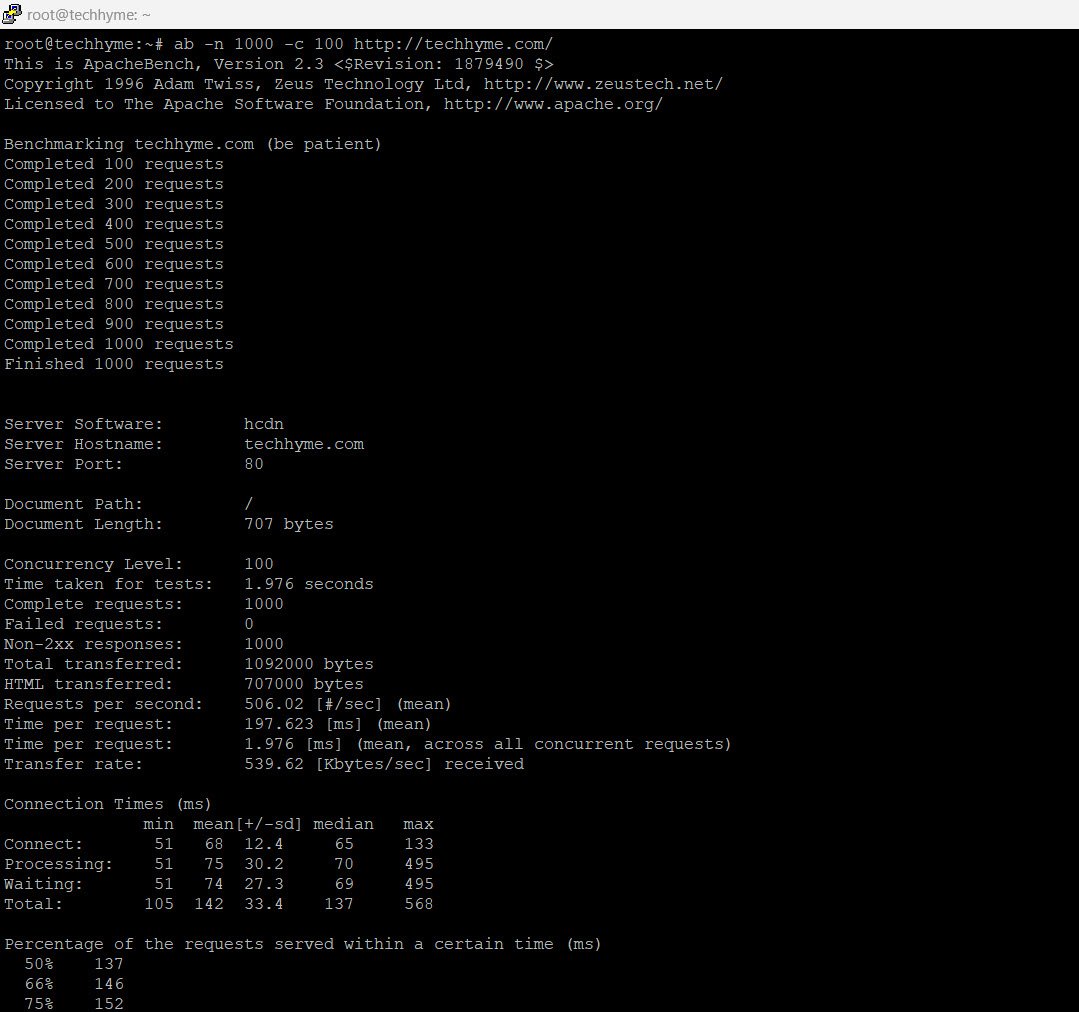
Load testing is a critical aspect of ensuring that your web server can handle various levels of traffic and user interactions. Apache Bench, commonly known as ab, is a powerful tool designed to perform load testing on websites running on the Apache web server. This tool is easy to install, configure, and use, making it an excellent choice for simulating different types of website loads and assessing your server’s performance under realistic conditions.
In this article, we will explore how to install, configure, and utilize Apache Bench for load testing, along with interpreting the results it produces.
1. Install Apache Bench
The first step is to install Apache Bench on your system. Use the following commands based on your Linux distribution:
For Ubuntu/Debian
sudo apt-get update
sudo apt-get install -y apache2-utils
For CentOS/Redhat/Fedora
yum install httpd-tools2. Run Apache Bench Load Testing
Once Apache Bench is installed, you can immediately start using it for load testing. The basic syntax for Apache Bench is:
ab <OPTIONS> <WEB_SERVER_ADDRESS>/<PATH>Specify the web server address or URL path you want to test. If you use a web server address, ensure you add a trailing slash (/) at the end.
For example, to send 10,000 requests with 100 concurrent connections to the URL www.example.com/products:
ab -n 1000 -c 100 www.example.com/products/In this command:
- `-n`: Specifies the total number of requests to send.
- `-c`: Specifies the concurrency or the number of multiple requests to perform at a time.
Alternatively, you can use the `-t` option to specify the time duration for sending requests.
A variety of options are available for customization, and you can explore them according to your testing needs.
3. Interpret Apache Bench Results
After the load testing is complete, Apache Bench will provide an output displaying key metrics, including:
- Time taken for tests
- Number of requests completed
- Failed requests
- Total data transferred
- HTML transferred
- Requests per second
- Time Per Request
- Transfer rate
Additionally, Apache Bench offers valuable statistics (min, mean, median, max) about connection times in milliseconds. It provides a distribution of the percentage of requests completed within specific time intervals.

Analyzing these metrics can help you assess your web server’s performance under different loads, identify potential bottlenecks, and optimize your server configuration for better scalability.
In conclusion, Apache Bench is a valuable tool for load testing Apache web servers. By following the steps outlined in this article, you can install, configure, and utilize Apache Bench to gain insights into your server’s performance and ensure it can handle the demands of real-world scenarios.
You may also like:- How To Install Python 2.7.18 From The Source
- How To Parse SSH Authentication Logs with Logstash
- How To Easily Crack Wi-Fi Password
- 6 Most Useful Windows Command Prompt Commands
- Ripgrep – Searching for Specific File Types and Beyond
- Insert and Create Data in Elasticsearch
- Manage Time and Date in Linux with timedatectl
- How to Set Network Adapter Priority on Windows 11
- How to Add a User to Sudoers on Ubuntu
- 25 Popular Linux IP Command Examples








